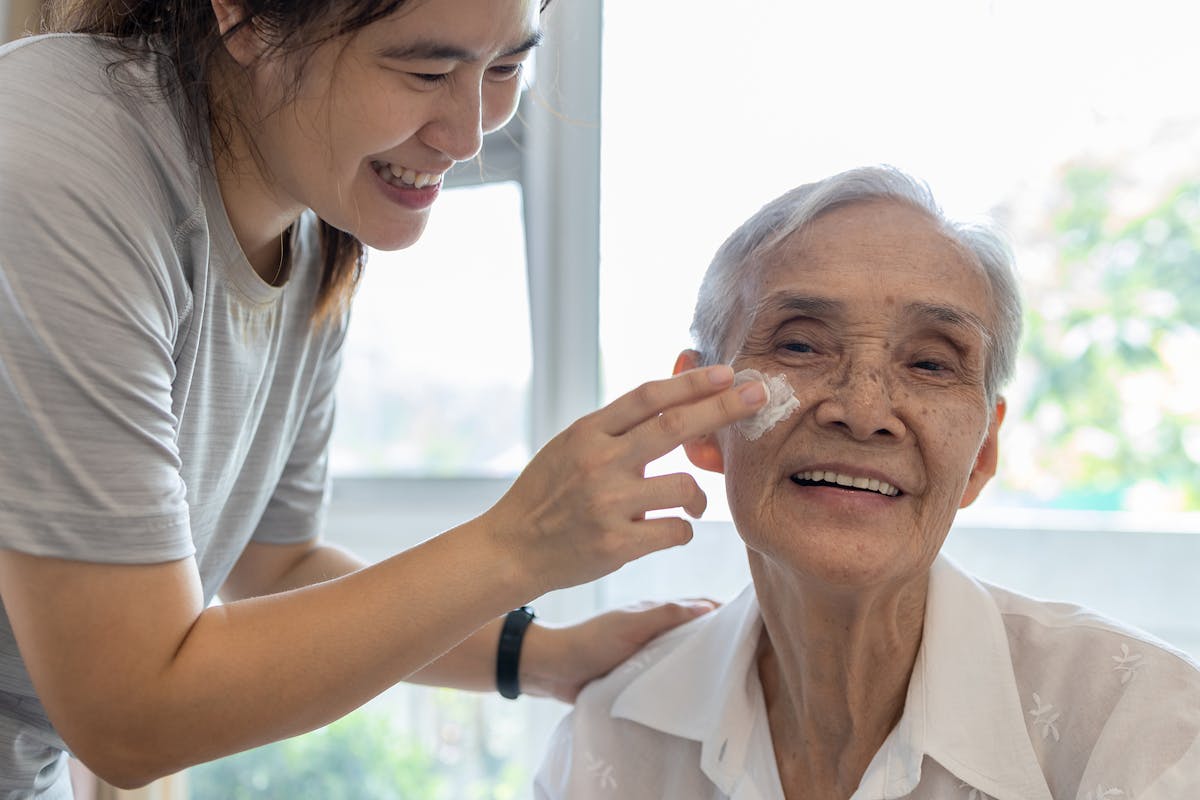Seniors and Skin Care: How to Prepare Your Skin for Winter

Winter brings a variety of struggles for older adults. For those with mobility challenges, icy sidewalks and driveways can make the risk of falling very real. The colder season can also exacerbate health conditions such as chronic obstructive pulmonary disease and asthma. Then there are those concerns we might not pay much attention to at first, such as skin health.
As the temperatures drop and winter sets in, many people begin to notice changes in their skin. Dryness, itching, and irritation become common complaints. For seniors, these issues can be more than just uncomfortable.
Aging skin is naturally thinner, more delicate, and slower to heal, making it especially vulnerable during the coldest months of the year. Understanding how to care for fragile skin in winter is essential for maintaining comfort, preventing damage, and supporting overall health.
Why Senior Skin Is More Fragile
As we age, our skin undergoes several changes that affect its resilience:
- Thinning of the epidermis: The outer layer of skin becomes thinner and less able to retain moisture.
- Reduced oil production: Sebaceous glands produce less oil, leading to dryness and cracking.
- Weaker collagen and elastin: These proteins decline with age, reducing the skin’s strength and elasticity.
- Slower cell regeneration: Cuts and scrapes take longer to heal, increasing the risk of infection.
During winter, these age-related changes are compounded by cold air, harsh winds, and dry indoor heating—all of which strip moisture from the skin.
Common Winter Skin Challenges for Seniors
Some of the most common skin issues older adults face in winter include:
- Dry, flaky skin
- Itching and irritation
- Cracks or fissures, especially on hands and feet
- Chapped lips
- Redness or inflammation
Left unaddressed, these symptoms can worsen and lead to painful conditions such as dermatitis, infections, or skin tears.
Winter Skin Care Tips for Seniors
Caring for aging skin during the winter requires a gentle, consistent approach. Here are some practical and effective strategies:
- Moisturize frequently
Using a rich, fragrance-free moisturizer is the cornerstone of winter skin care. Apply lotion immediately after bathing, while the skin is still damp, to lock in moisture. Look for products containing ingredients like ceramides, glycerin, or hyaluronic acid, which help maintain the skin’s natural barrier.
- Use gentle cleansers
Many soaps and cleansers strip the skin of its natural oils. Seniors should use mild, moisturizing cleansers that are free of alcohol, fragrances, and dyes. Avoid long, hot showers and baths, as they can worsen dryness.
- Stay hydrated
Drinking plenty of water helps keep the skin hydrated from the inside out. Encourage regular water intake, even if seniors don’t feel as thirsty during colder months.
- Protect against the elements
When going outside, it’s essential to cover exposed skin. Wear gloves, scarves, and hats to protect against wind and cold. Use a humidifier indoors to counteract dry, heated air.
- Monitor for skin changes
Because older skin is more prone to tears and bruising, it’s important to check regularly for any new or worsening skin issues. Notify a healthcare provider if there are signs of infection, persistent dryness, or wounds that won’t heal.
Shoo the Flu This Winter
While we’re discussing winter health concerns for seniors, there’s another one that makes its return late in the fall and usually sticks around until spring: the influenza virus. If you haven’t already, be sure to schedule an appointment for your annual flu shot. For those on the fence about whether it works or not, read The Health Benefits of an Annual Flu Shot to learn more!